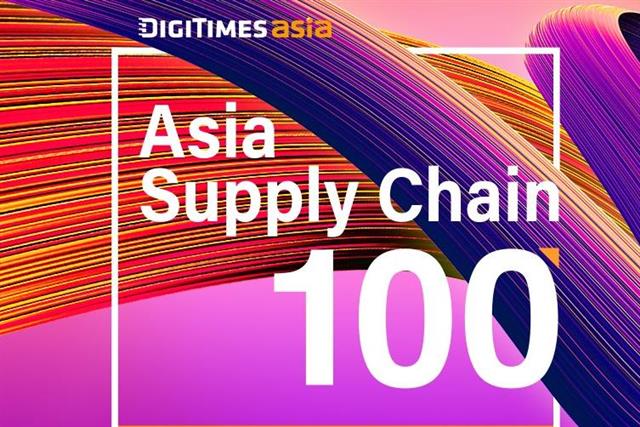DIGITIMES has planned a series of special research projects, targeting the changes in the Asia market and supply chain. For the research, DIGITIMES has picked 100 representative Asian enterprises from the ICT and car sectors in terms of their revenues.
Among the 100 enterprises, 37 are from Japan, 33 from China, 14 from Taiwan and 11 from South Korea, showing that the four major markets in East and Northeast Asia still stand on the high ground of the industries. Many original products and solutions still mainly come from these East and Northeast Asian nations.
Japan is a veteran industrial power in Asia, having started in the industrial business rather early, with a balanced industry development. At the beginning of 1990s, almost all of Japan's products ranging from consumer electronics to semiconductors and panels were top of the line in the world. Though both South Korea and Taiwan began surpassing Japan in the mid-1990s, Japan still plays a key part in Asia's supply chain come the new millennium, thanks to its strong foundations in the basic and automotive industries. Kioxia's NAND flash memory, Renesas Electronics' automotive semiconductors, Murata Manufacturing's passive components, Denso's automotive components as well as Toyota, Nissan and Honda's presence in the global automotive industry all indicate Japan's dominance in Asia's industries and its roles as an unneglectable coopetitor in a race with Taiwan, China and South Korea to be the leader of Asia's industrial scene.
China was a production base relying heavily on cheap labor, low social costs and government subsidies to maintain growth in 1990s. However, China began to develop its own industries 2000, with Huawei, BOE taking over Lenovo and Stone to become the leaders of China's industries. China's GDP has also leapfrogged Japan and become the second largest economic superpower worldwide since 2009. With its economical achievements and growth momentum plus the rise of smartphones, China is no longer a market follower. In addition to the rise of local Internet giants such as Baidu, Alibaba and Tencent, more domestic unicorns have grown to become Internet giants with market cap surpassing US$1 billion, thanks to the incubation by China's comfortable environment. According to data conducted by research firm IC Insights in the past few years, around a quarter of global unicorns are from China, with the country dominating the global smart applications and startup segments.
In addition, China also has leaderships in the PC, handset and electric vehicle (EV) industry sectors. Lenovo is currently the largest PC brand worldwide and seven out of the global top-10 handset brands are from China. In 2019, nearly half of the global EVs were made in China. China's industrial development model that relies on the domestic market combined with government subsidies seems to be the most successful formula in the world.
China-based ICT companies such as Luxshare, Lens Technology and Wingtech also have become parts of Apple's supply chain in China. Foreign firms looking to reduce investment in China and selling plants to local companies purchasing factories seem to be copying what Texas Instruments and IBM had done in the 1990s in Asia. But the main difference this time round is the pressure from the US-China geopolitical tensions that have been adding uncertainty in the supply chain.
In February 2019, the Trump administration published a note on the White House website, asking American enterprises to continue supporting the US government in its bid to play a leading role in development of artificial intelligence (AI), advanced manufacturing, 5G and quantum technologies. In the same month two years later, the Biden administration reiterated that the US will regain the control of the supply chains for four major industries: semiconductor, automotive high-power battery, rare earth and pharmaceutical.
China's formula of success now faces new challenges. While the COVID-19 pandemic is raging on, Europe is offering more broad ranges of subsidies to attract local consumers to switch to EVs. The EU took over China to become the largest EV market worldwide in 2020, which has triggered changes to the battery supply chain. Of the global top-10 automotive battery makers in 2019, six were based in China, but the number dropped to only four in 2020. Of the remaining six, three were from South Korea and three from Japan.
While Samsung Electronics and TSMC have committed to building advanced wafer foundries in the US, it is very unlikely that the US would not want similar commitments from global first-tier battery makers, none of whom currently have production plants in the US.
Automakers Tesla and Ford have both already started developing their own automotive battery businesses. In addition, research by Infineon also shows business opportunities from automotive semiconductors can generate up to around US$45 billion a year in sales. Semiconductors' contribution will also increase from US$396 in a traditional automobile to US$834 in an EV, while the amount for an autonomous driving vehicle can go up to US$1,250, with the number of semiconductors used also far surpassing those of TVs and handsets.
We are currently living in an era where the structures of the PC, server, handset and EV industries are all changing. There are many areas that need to be monitored. Can the US achieve whatever it desires? When Southeast and South Asian countries start improving their supply chain infrastructures, they are unlikely to give up on the opportunities of producing EVs and heading deeper into Internet of Vehicles (IoV). For Japan, South Korea, Taiwan and China, who could be the best partner for these emerging economies?
Automotive contribution per car
Semiconductor units per product
Sources: Infineon and KATECH, compiled by Digitimes, April 2021



